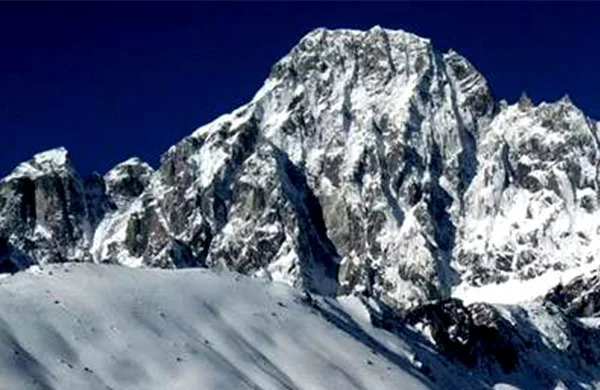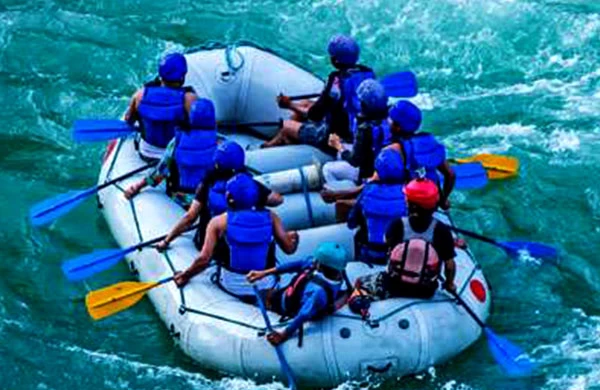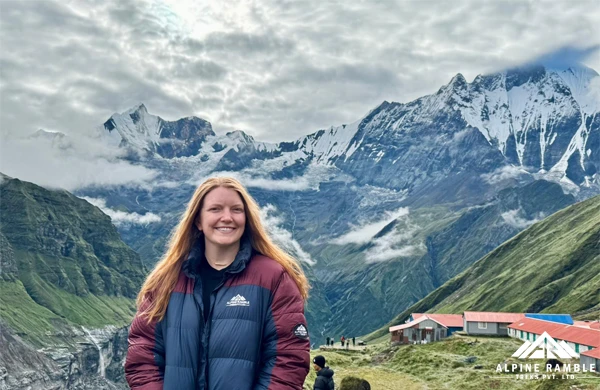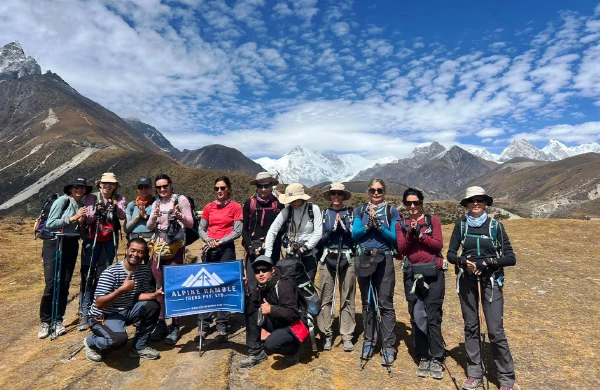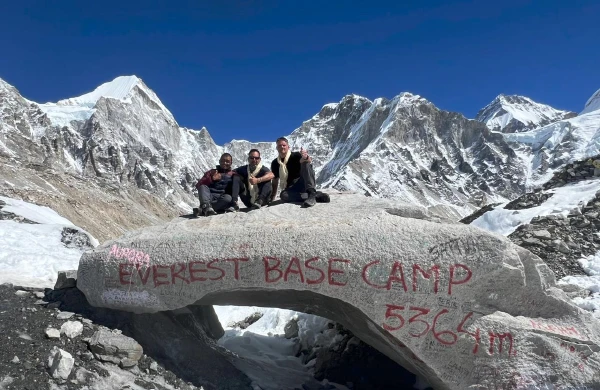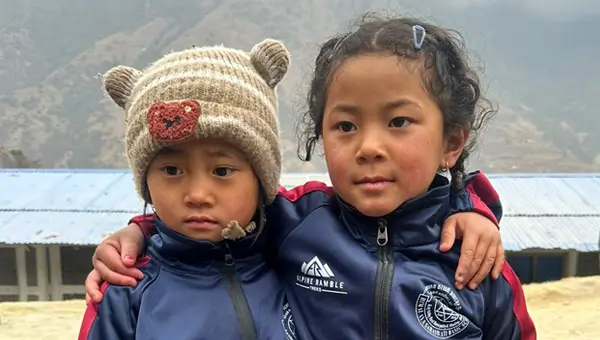One of the best ways to explore and come across the spectacular beauty of the Himalayas is the Annapurna Base Camp Trek. Hundreds and thousands of travel enthusiasts venture on this amazing adventurous journey every year, with one motto to dwell in the charm of the glistening snowy Himalayan Mountains. No doubtAnnapurna Base Camp Trekking falls under the most admired trails in the Himalayas.
Annapurna Base Camp Trek leads to the lap of the world's tenth highest mountain, Mt. Annapurna (8,091 m). The journey lets you witness some of the most stunning massifs, fine mountain villages, dense forests, breath-taking sceneries, and the kind locals.
Along with all this pleasure and adventure come lots of prior preparations. To make the trek successful, there are lots of things that are required to be properly planned and executed. And, this should be done by sides, the travel agency and the guest.
In this blog, we are going to share detailed information about the Annapurna Base Camp Trek route, and all the things that you should know before joining the trip.
Annapurna Base Camp Trek Route

As per your time availability, you can choose one of our Annapurna Base Camp Trek itinerary or custom design your own. We offer a range of Annapurna Base Camp Trekking packages from short 3 days Annapurna Base Camp Trek to 15 day Annapurna Base Camp Trek. Usually, Annapurna Base Camp Trek begins from a scenic flight/drive from Kathmandu to Pokhara. From here, a short drive takes you to the starting point of the trek, Nayapul.
The trail from Nayapul gradually ascends through Tikhedhunga and leads you to the beautiful Ghorepani village. The next morning, you hike to Poon Hill to witness a glorious sunrise and wonderful views of the western Himalayan mountains. Further, the trail passes by lush rhododendron forests and fine villages like Ghandruk, Tadapani, Chhomrong, and Himalaya. Before reaching the Annapurna Base Camp, you pass by Machhapuchhre Base Camp. After exploring ABC, you descend through Bamboo and stop at Jhinu Danda to enjoy a natural hot spring. The trail then takes back to Nayapul, which marks the end of Annapurna Base Camp Trekking.
Annapurna Base Camp Trek difficulty & Altitude sickness
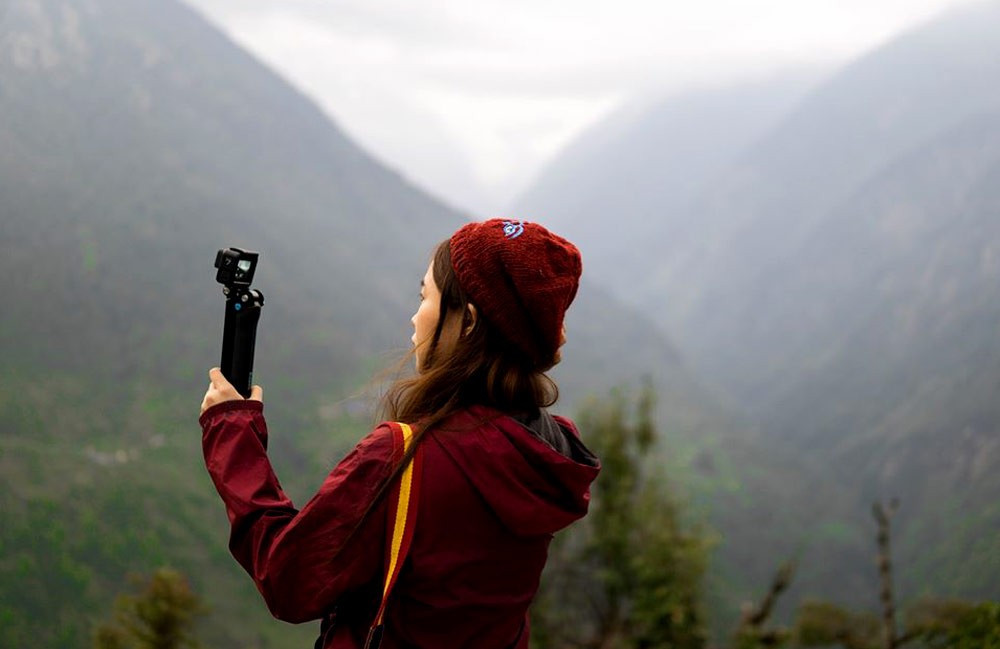
Annapurna Base Camp Trek route follows a moderate trail. If you are an experienced trekker, then this trek will be a piece of cake for you. However, if you are a beginner trekker, the trail can get a little difficult for you because of long walking, many ascend & descends, and trodden paths. Regardless of the difficulty, anyone can do Annapurna Base Camp Trek if he/she is healthy and physically fit.
Annapurna Base Camp Trekking is a high altitude trek, which automatically involves the risk of altitude sickness, also known as acute mountain sickness. This trek takes you above 4,000 meters in a matter of a few days. Altitude sickness can get really scary and troublesome if not handled properly on time.
To lower the chances of AMS, we take all the measures during the trek. Our Annapurna Base Camp Trek itinerary is crafted including ample rest days along with a constant increase in elevation. Moreover, our professional guides make sure you are not having any discomfort on the trail, and check-upon you every day.
Annapurna Base Camp Trek Map
Best season to go on Annapurna Base Camp Trek
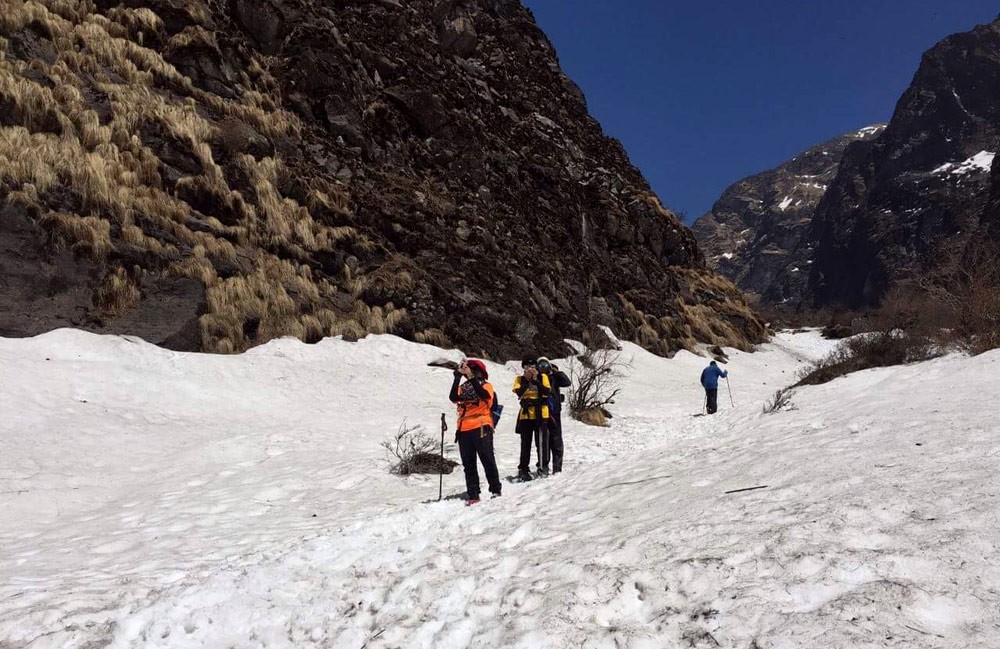
As a matter of fact, you can go to Annapurna Base Camp Trek throughout the year. It completely depends on your preference and circumstances. With that being said, you have to know all the pros and cons of traveling in each of the seasons so that you can choose what is best for you.
Spring (March to May)
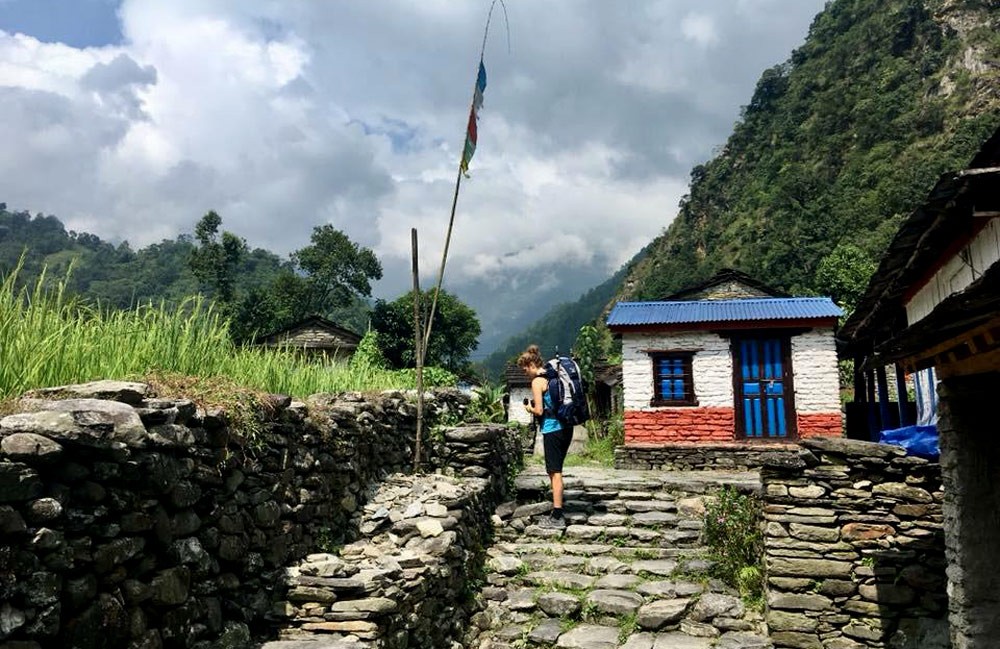
Spring is one of the best times to go on Annapurna Base Camp Trek because of low precipitation and mild-temperature. The days are usually bright and sunny, which makes the views clear. In the early days of the spring, you will experience coldness in the air that later changes into warmer days. Due to high elevation, there can be chances of snowfall in March, but other months will be fine. Likewise, the trail welcomes numerous vegetation and flora at this time of the year.
Summer (June to Mid- September)
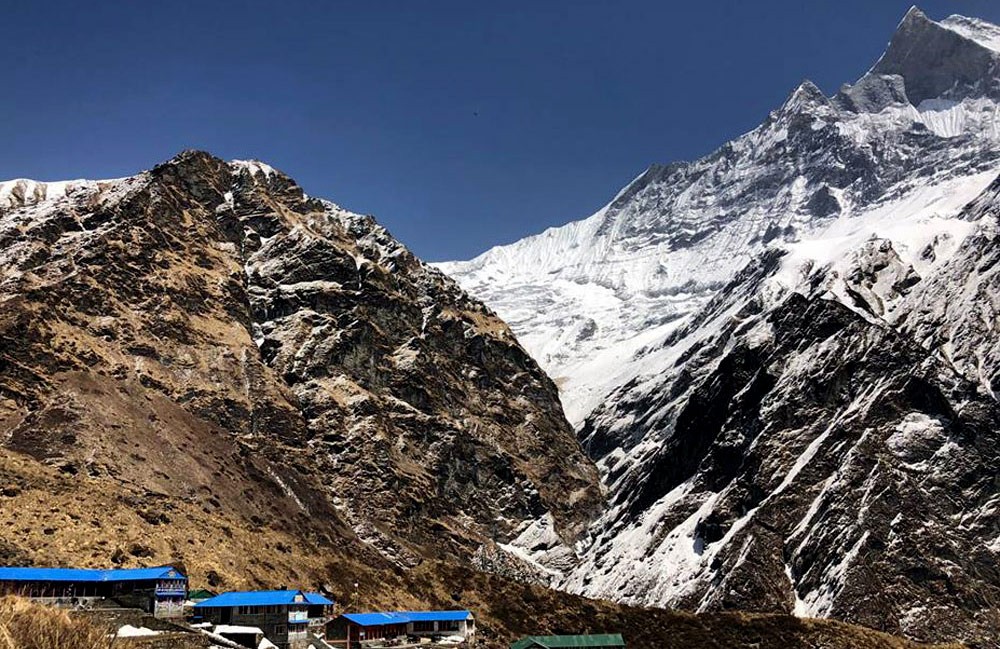
The temperature ranges between 20 to 25 degrees Celsius on average in summer. The lower altitude is comparatively warmer than the high altitude. Still, you can walk and enjoy the trek. Similarly, the monsoon hits slowly in these months with chances of heavy rainfall. We recommend you, start the day early and reach your destination on time so that you do not get stuck in rain.
The weather gets very unpredictable, and it cannot be said when rainfall will occur. The trail can get slippery with bugs and unclear views, however, the rain-washed view is one of the best views one can admire. As it is off-season, the trail is less crowded as well.
Autumn ( October to November)
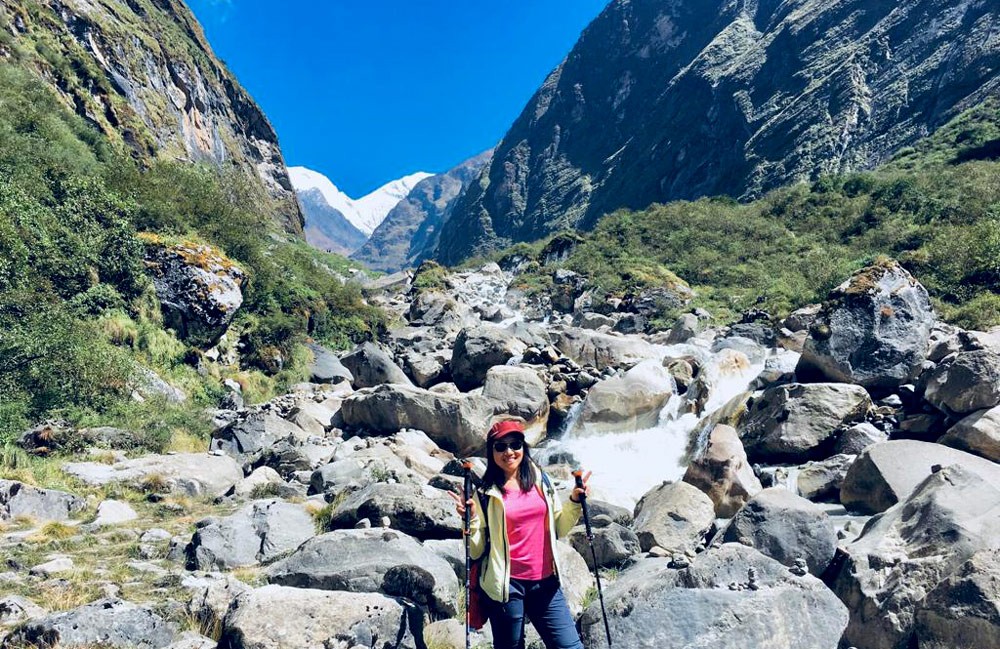
Autumn is the most preferred time to go on Annapurna Base Camp Trek. It is the peak season, and you can see many fellow trekkers from all around the world. There can be 6 mm of precipitation in October, however, November is mostly clear and bright with a hint of chillness in the air. The temperature ranges anywhere from 17 degrees celsius to 11 degrees celsius. Likewise, the views are fantastic and alluring. Other than the pleasant weather, festivals make this season more attractive to join the trek. Nepalis celebrate the range of their most important festivals in the autumn.
Winter (December to February)
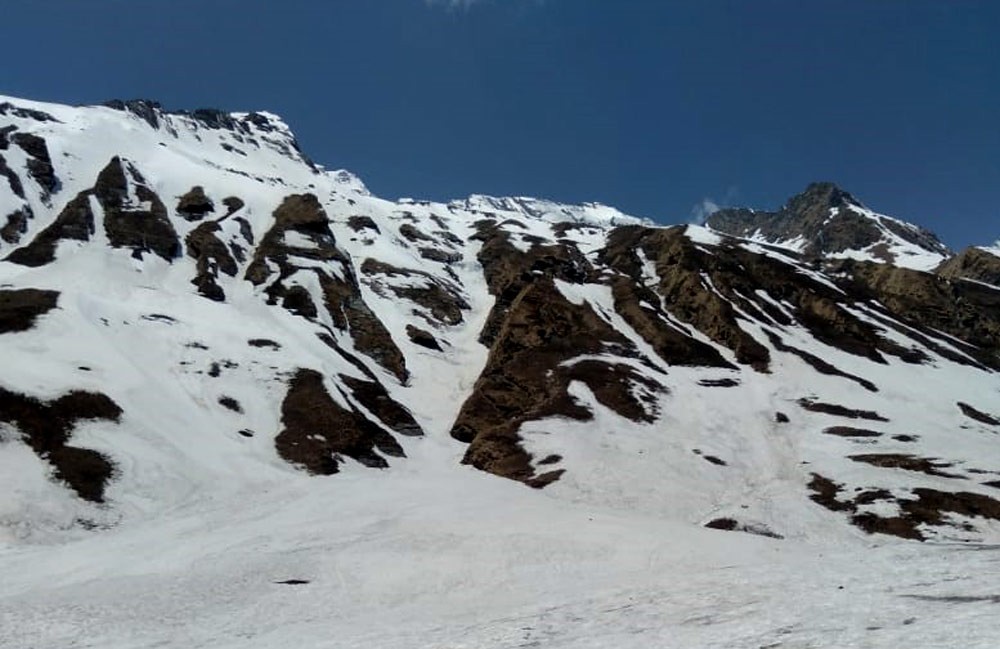
Winter is the coldest time of the year in the Himalayas. The temperature can fall below -19 degrees Celsius at the base camp. There can be unpredicted chances of heavy snowfall, strong wind, and avalanches. Winter is considered off-season. Photographers are the ones who usually approach this time of the year to trek to Annapurna Base Camp. The views can be either unclear or breath-taking, depending on the weather. You need to precisely prepare for the trek if you are planning to join in winter. Also, know that most of the teahouses get closed on the higher elevation due to cold.
Food & Accommodations on Annapurna Base Camp Trek
Annapurna Base Camp Trekking trail offers a wide range of cuisines to dig in from typical Nepali dishes to Indian, Tibetan, and Continental. During the trek, we offer three meals a day- breakfast, lunch & dinner. All the meals will be served as per the menu of the guesthouse/teahouse. However, we want you to know that the taste of the dishes may not be the same as the city one because of species.
For breakfast, you can find oatmeal, toast (with jam, honey, peanut butter), Tibetan bread, corn flakes, porridge, pancakes, eggs, hashed brown, muesli, etc. Likewise, lunch and dinner usually consist of Thukpa, dal Bhat, momo, pasta, soups, steaks, burgers, pizza, veggies, curries, chapati (Indian/Tibetan bread), etc. Similarly, a wide range of drinks like tea, coffee, juice, hot chocolates, milk, etc is also available.
Travel Insurance

Travel insurance is a must to have to join Annapurna Base Camp Trekking. ABC Trek takes you to a very remote part of the Himalayas, where the basic infrastructure is underdeveloped. Likewise, the weather is unpredictable. No one knows what holds in the next moment in the Himalayas. Therefore, it is strongly recommended to have well-covered travel insurance before joining the trek.
Things like air evacuations, medical bills, and hospital bills are mandatory to have in the insurance. We also recommend adding loss or theft of personal properties and flight cancellation in your travel insurance. The Nepal government does not allow foreigners to take out travel insurance in Nepal, therefore you are requested to get one in your home country, and carry all the documents with you during the journey.
Packing list for Annapurna Base Camp Trek
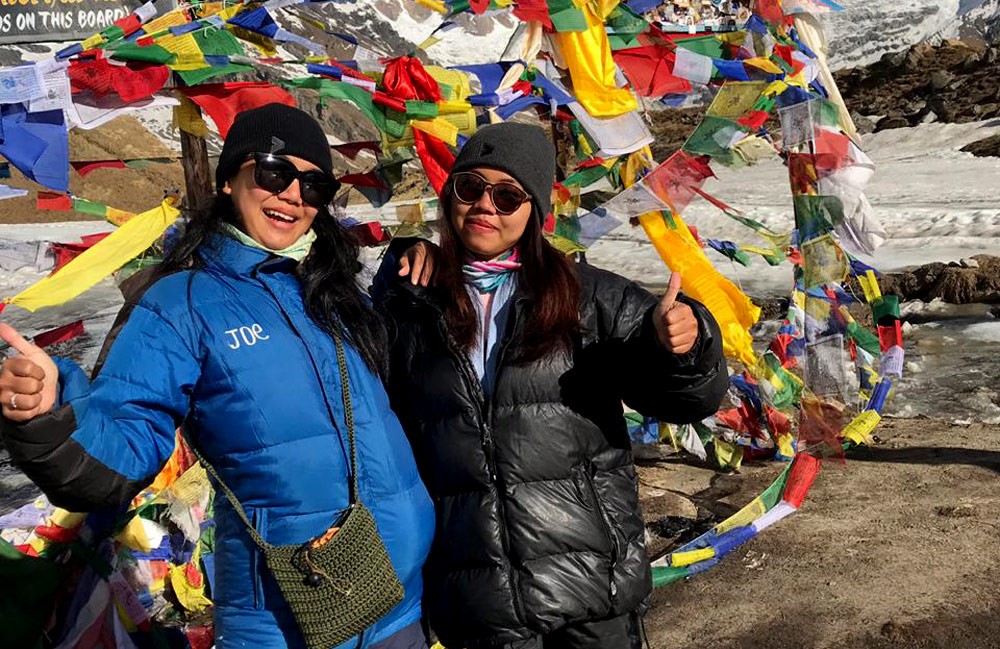
- A few pairs of Thermal tops
- Fleece jacket/pullover
- Windcheater - waterproof shell jacket one pair
- Down jacket
- Comfortable Fleece/wool trousers
- Trekking pants- at least 2 pairs
- Mittens/woolen gloves
- Warm Hiking socks
- Trekking sue with spare laces
- Pair of flip flop
- Breathable underwears
- Hiking Cotton trousers/t-shirts
- Sun hat/scarf
- Sunglasses
- Sleeping bag
- Trekking poles
- Day bag above 40 L
- 1 set- Headlamp
- Small lock for the day backpack
- Reusable water bottles- 2 letters
- Water purification tablets
- Wash towel
- Toiletries (wet tissue, quick-drying towel, nail clipper, small mirror, toothpaste & brush, toilet paper, moisturizers, lip balms, sunscreens, sanitary pads, hand sanitizer, etc)
- Rain poncho
- Basic personal first aid kit
- Miscellaneous (journal, pen, extra batteries, small torch, book/kindle, snacks/bars)
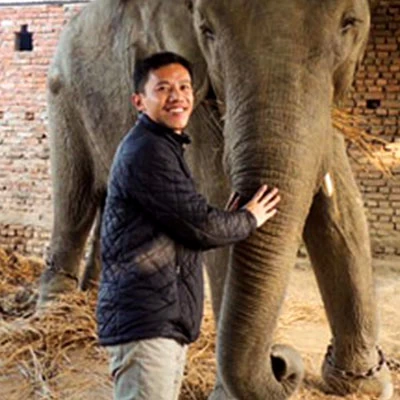
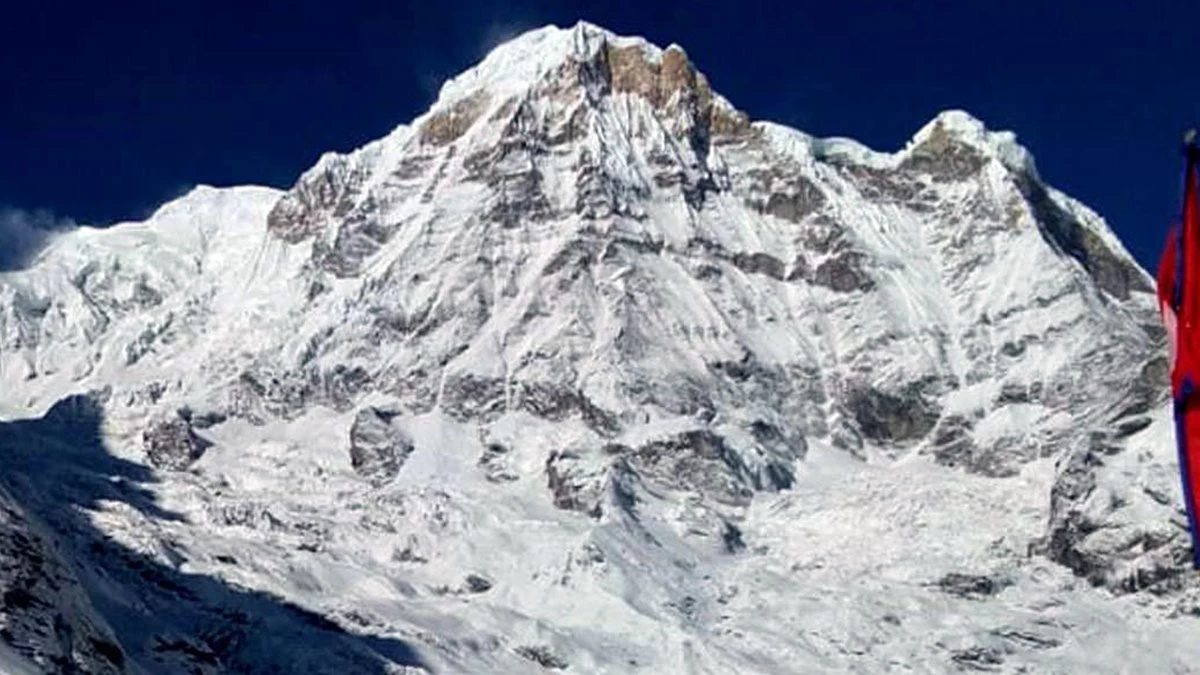
.jpg)

